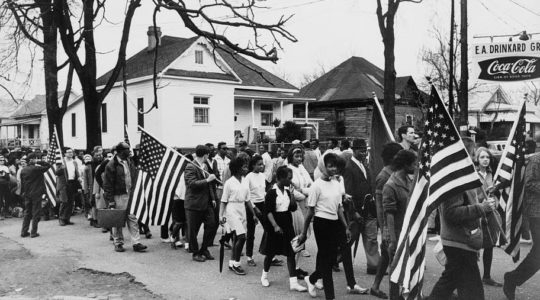Dr. A. S. W. Rosenbach is an adventurer in the world of books.
Men in quest of new thrills have searched the worlds for rare specimens of animal life, gone on daring expeditions, hunted ancient tombs and excavated cities. Unearthing original manuscripts is Dr. Rosenbach’s pursuit.
Seated in his East Fifty-fifth street study, surrounded by walls of books, he spoke meditatively, between puffs on his thick cigar.
In answer to an inquiry about special collections of things Jewish in America, he mentioned the “American Judaica.”
“These are books and pamphlets, by Jews or relating to them, printed in the United States from the establishment of the press in the colonies until 1850,” he explained.
Always interested in American Jewish history, he first began searching for these books when he was twenty years old. He inherited a great many from his uncle. They are now housed in the American Jewish Historical Society, of which Dr. Rosenbach is president.
POSSESSES RARE JEWISH BOOKS
Some of his rare Jewish books are: the first Pentateuch issued at Soncino, Italy, in 1485; the first Pentateuch printed in Lisbon in 1491, with the finest known Jewish binding of the fifteenth century; Ben Jonson’s copy of a Hebrew grammar, issued in 1615, and the Hebrew grammar that belonged to Robert Browning and Elizabeth Barrett Browning. Hebrew incunabula (books printed before 1500) are also important items.
Among his treasures is the first book printed in Lisbon, “Moses ben Nachman,” published by Toledano in 1489. In his possession, too, are manuscripts relating to the Inquisition in Spain and Mexico.
Dr. Rosenbach’s interests are not confined to books alone. He is active in many spheres. As president of the American Friends of the Hebrew University, he is enthusiastic over that institution’s rapid progress. “I am very much interested in the new Agricultural and Science building built under the supervision of Dr. Chaim Weizman,” he declared. “I think that the university has a greater future than any other Jewish institution in the world. It is nonsectarian and welcomes both Arabs and Jews. The many German professors are proving a great addition to the faculty.”
STARTED AT TENDER AGE
Dr. Rosenbach does not believe that the depression has affected book collecting. Depressions may come and go but a good book holds its own forever.
The leading bibliophile of the world began his career at eleven. Little Abraham Rosenbach made his original purchase at an auction, buying an illustrated edition of “Reynard, the Fox,” for twenty-four dollars. Allowing his enthusiasm to get the better of his financial judgment, he paid ten dollars down, his total capital, and pledged part of his allowance for many weeks to come. Stan V. Henkel, with whom he made the bargain, said at the time:
“I’ve seen it start at an early age, and run in families, but in all my experience, this is the very first baby bibliomaniac to come my way.”
At the age of eighteen, young Rosenbach made his first valuable literary discovery, purchasing the original edition of Dr. Samuel Johnson’s “Prologue,” for three dollars and sixty cents. He has never parted with it since. During his college days, when his funds were very slender, he turned down an offer of $5,000 rather than give up his treasure.
At the death of his uncle, Moses Polock, in 1903, he inherited many rare books. It was from that period on that he seriously took up the “sport of book collecting,” as he calls it.
So ardently does he love his “sport” that he is able to say:
“I suppose there are people–I’ve been told there are intelligent people–who would just as soon have an edition of Keats’s “Poems,” for example, well printed on good paper, in a handsome modern binding, as a first edition in its original boards! I only hope I shall never meet them.”
JTA has documented Jewish history in real-time for over a century. Keep our journalism strong by joining us in supporting independent, award-winning reporting.
The Archive of the Jewish Telegraphic Agency includes articles published from 1923 to 2008. Archive stories reflect the journalistic standards and practices of the time they were published.



